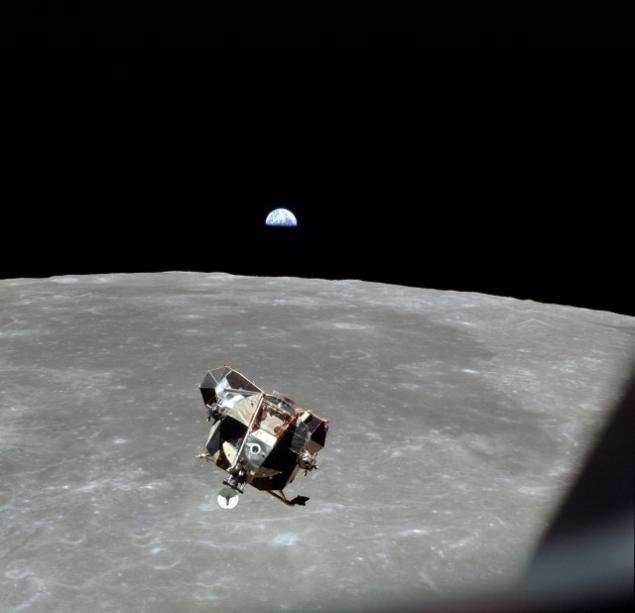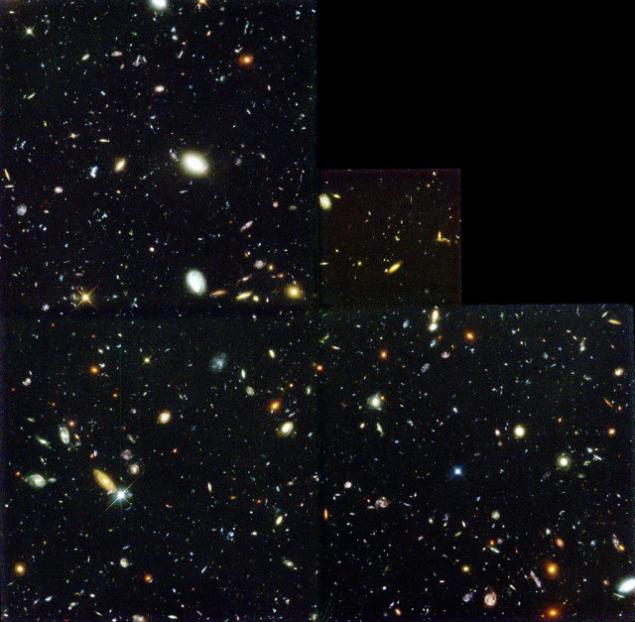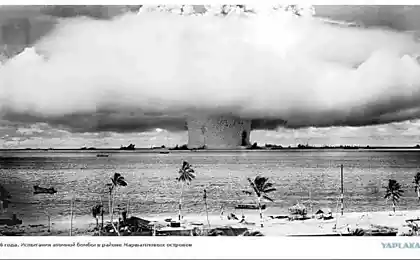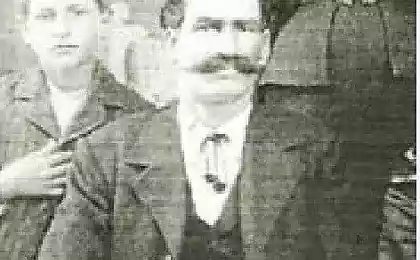568
13 main images in the history of science
ProshloeNa plunge into this week's Wellcome Trust Fund summed up the annual competition of scientific photography. In honor of this we remember the most outstanding images in the history of science.
The picture from the lunar orbity
Michael Collins was a member of the mission "Apollo 11", which first landed on the moon. Spacecraft "Apollo 11" consisted of a lander "Eagle" and orbital "Columbia." While Neil Armstrong and Buzz Aldrin walked on the moon, Collins remained alone in lunar orbit in the module "Columbia" and never touched the surface of the satellite. But he made a spectacular shots of how the "Eagle" back to "Columbia" after the landing on the moon. As a result, this photo has gone into history as the picture, which is all people of the earth, and the living and the dead. Even those who are not yet born when this picture was taken, you still are on this blue ball in the form of atoms. All-everything except the photographer - Michael Collins.
"Hubble-Deep Field"
"Hubble-Deep Field" - this image of a small region in the constellation Ursa Major, which was obtained space telescope "Hubble" in 10 days - from 18 to 28 December 1995. Shooting area is about 1/28 000 000 area of the celestial sphere, and the whole picture assembled from 342 separate images. After that, the image of deep space appeared several even deeper, for example, Hubble Ultra Deep Field (2004) and Hubble Extreme Deep Field (2012). But that image is "Hubble Deep Field," was the first photographer to demonstrate the real scale of the cosmos. All luminous objects in the picture - a whole galaxy, which can count about 3,000 - from distinct irregular and spiral in the foreground to the subtle, the size of only a few pixels - in the background. This image became the basis for more than 400 studies and articles.
Read more on the site «Look at me»
via www.lookatme.ru/mag/live/inspiration-lists/212701-science-pics
The picture from the lunar orbity

Michael Collins was a member of the mission "Apollo 11", which first landed on the moon. Spacecraft "Apollo 11" consisted of a lander "Eagle" and orbital "Columbia." While Neil Armstrong and Buzz Aldrin walked on the moon, Collins remained alone in lunar orbit in the module "Columbia" and never touched the surface of the satellite. But he made a spectacular shots of how the "Eagle" back to "Columbia" after the landing on the moon. As a result, this photo has gone into history as the picture, which is all people of the earth, and the living and the dead. Even those who are not yet born when this picture was taken, you still are on this blue ball in the form of atoms. All-everything except the photographer - Michael Collins.
"Hubble-Deep Field"

"Hubble-Deep Field" - this image of a small region in the constellation Ursa Major, which was obtained space telescope "Hubble" in 10 days - from 18 to 28 December 1995. Shooting area is about 1/28 000 000 area of the celestial sphere, and the whole picture assembled from 342 separate images. After that, the image of deep space appeared several even deeper, for example, Hubble Ultra Deep Field (2004) and Hubble Extreme Deep Field (2012). But that image is "Hubble Deep Field," was the first photographer to demonstrate the real scale of the cosmos. All luminous objects in the picture - a whole galaxy, which can count about 3,000 - from distinct irregular and spiral in the foreground to the subtle, the size of only a few pixels - in the background. This image became the basis for more than 400 studies and articles.
Read more on the site «Look at me»
via www.lookatme.ru/mag/live/inspiration-lists/212701-science-pics
"Crony capitalism" why all the money pulled out a small group of people, while the others get poorer
Zhores Alferov: Russia does not need science
























